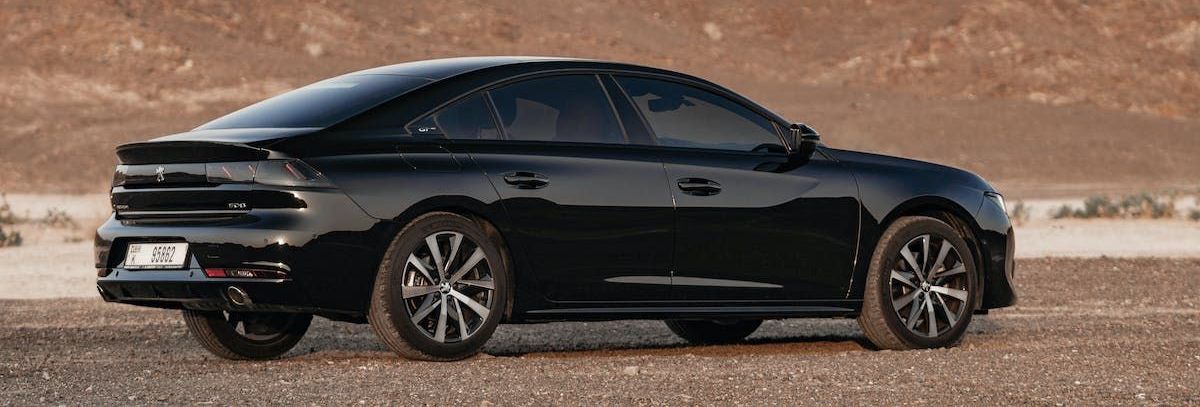Why Window Tint Can Be Illegal
Brian Fairbrother • Dec 24, 2023
"Behind the Dark Glass: Understanding Why Window Tint Can Be Illegal"
Introduction:
Window tinting has become a popular choice for vehicle owners seeking privacy, UV protection, and a touch of style. However, in many regions, the legality of window tint is a subject of scrutiny. In this blog post, we'll delve into the reasons why window tint can be illegal and the considerations that come into play.
Safety and Visibility Concerns:
One of the primary reasons for window tint regulations is safety. Dark window tint can significantly reduce visibility, especially at night or in adverse weather conditions. Law enforcement agencies emphasize the importance of clear visibility for drivers to prevent accidents and ensure road safety.
Emergency Services and Law Enforcement:
Tinted windows can obstruct the view into a vehicle, making it challenging for law enforcement officers to assess the situation during traffic stops. Additionally, in emergency situations, tinted windows may impede the ability of first responders to see inside the vehicle and provide assistance, potentially delaying critical interventions.
Regulation of Light Transmission:
Many jurisdictions have specific regulations regarding the percentage of light that must pass through vehicle windows. These regulations are designed to ensure that drivers have an unobstructed view of the road and surroundings. Dark window tint can violate these regulations, leading to legal consequences.
Preventing Illegal Activities:
Tinted windows can provide a level of anonymity for individuals inside a vehicle, raising concerns about the potential for illegal activities such as smuggling, drug trafficking, or other criminal actions. Regulations on window tinting aim to balance individual privacy with the need for law enforcement to maintain public safety.
Inconsistent Enforcement:
In some cases, window tint regulations may be inconsistently enforced, leading to confusion among vehicle owners. Strict enforcement helps ensure that all drivers adhere to the same safety standards and regulations.
Special Considerations for Front Windows:
In many jurisdictions, there are stricter regulations for the level of tint allowed on front windows compared to rear windows. This is because maintaining clear visibility for the driver is considered paramount for safe operation of the vehicle.
Addressing the Issue Responsibly:
If you are considering window tint for your vehicle, it's crucial to be aware of and comply with local regulations. Professional installation services can guide you in choosing tints that meet legal standards while still providing the benefits you desire, such as UV protection and aesthetics.
Conclusion:
While window tinting offers various benefits, the legality of its application varies across regions, driven by concerns for safety, visibility, and law enforcement considerations. It's essential for vehicle owners to understand and adhere to local regulations to ensure road safety, prevent legal issues, and maintain a balance between personal preferences and societal standards. Always consult local authorities or professionals for guidance on compliant window tinting options.

By Brian Fairbrother
•
24 Dec, 2023
Introduction: When it comes to vehicle customization, enthusiasts are always on the lookout for ways to stand out on the road. One question that often arises is whether window tint, a popular choice for enhancing privacy and aesthetics on windows, can be applied to taillights. In this blog post, we'll explore the possibilities and considerations of using window tint on taillights. Understanding Window Tint for Taillights: Window tint is typically a thin film made of polyester, with varying degrees of darkness and UV-blocking properties. While it is commonly used on windows, applying tint to taillights involves a slightly different set of considerations. Legal Considerations: Before diving into the world of taillight tinting, it's crucial to be aware of local regulations. Many regions have specific laws regarding the darkness of vehicle lights, including taillights. Applying tint that exceeds legal limits can result in fines and compromise safety on the road. Purpose of Taillights: Taillights serve a critical safety function by providing visibility to other drivers, especially in low-light conditions. Tinting taillights may impact their effectiveness and compromise safety, making it essential to strike a balance between style and functionality. Tail Light Tinting Films: For those considering taillight tinting, there are specialized films designed for this purpose. These films are often transparent when applied but can provide a smoked or tinted appearance when the lights are off. They are engineered to allow light to pass through when illuminated, maintaining visibility and safety. DIY vs. Professional Installation: Applying tint to taillights requires precision to avoid bubbles, creases, or uneven application. While some automotive enthusiasts may choose to take on this task as a DIY project, professional installation ensures a seamless and uniform finish while adhering to legal standards. Benefits of Taillight Tinting: Aesthetics: Tinted taillights can give your vehicle a sleek and customized appearance, enhancing its overall aesthetic appeal. UV Protection: Specialized tint films may offer UV protection for your taillights, preventing potential discoloration or damage over time. Customization Options: Tint films come in various shades, allowing for customization based on personal preferences. Conclusion: In conclusion, while window tint can be applied to taillights for style and customization, it's crucial to prioritize safety and adhere to legal standards. Specialized tint films designed for taillights offer a balance between aesthetics and functionality. Whether you choose a DIY approach or opt for professional installation, ensure that your customized taillights not only look good but also maintain their critical safety role on the road. Before embarking on a taillight tinting project, always check and comply with local regulations to ensure your vehicle remains roadworthy and safe for everyone.

By Brian Fairbrother
•
24 Dec, 2023
I ntroduction : Window tinting is a popular choice for those seeking privacy, UV protection, and a sleek aesthetic for their vehicles or homes. However, circumstances change, and you may find yourself wondering: Can window tint be removed? In this blog post, we'll explore the ins and outs of window tint removal and what you need to know before deciding to unveil your windows. Understanding Window Tint Adhesives: Window tint is typically applied with an adhesive that bonds the tint film to the glass surface. The adhesive ensures a secure fit and long-lasting tinting effect. While this adhesion is crucial for the tint's effectiveness, it also makes the removal process a bit more intricate. DIY vs. Professional Removal: The internet is filled with DIY methods for removing window tint, from using soapy water to hairdryers. However, the effectiveness of these methods can vary, and improper removal may damage the glass or leave adhesive residue behind. For a safe and clean removal, it's often advisable to seek professional services. Professional Window Tint Removal Process: Professional tint removal involves skilled techniques to ensure a clean and efficient process. Here's an overview of the typical steps: Assessment: Professionals assess the current condition of the window tint and the adhesive to determine the best removal approach. Heating: Heat is applied to the tinted area, softening the adhesive and making it easier to peel off the film. Peeling: The tint film is carefully peeled away from the glass surface, taking care not to damage the glass. Adhesive Removal: Any remaining adhesive is removed using specialized solutions, ensuring a clear and pristine glass surface. Cleaning: The glass is thoroughly cleaned to remove any residue, leaving a spotless finish. Considerations Before Tint Removal: Legal Restrictions: Check local regulations regarding window tint darkness. Some areas have specific limits on how much tint can be applied to certain windows. Age and Condition: Older tint films may have become brittle or discolored, making removal more challenging. Professionals can assess the condition and advise on the best course of action. Vehicle or Property Ownership: If the window tint was applied by a previous owner, consider consulting with a professional for removal to ensure a thorough and safe process. Conclusion: In conclusion, yes, window tint can be removed, and the process is best entrusted to professionals to ensure a smooth and damage-free result. Whether you're looking to update your style, comply with regulations, or address issues with aging tint, a professional removal service ensures clarity without compromise. When in doubt, consult with experienced tinting professionals who can guide you through the removal process, providing a transparent view for the road ahead.

By Brian Fairbrother
•
24 Dec, 2023
Introduction: Window tinting has become a popular choice for vehicle owners and homeowners alike, offering benefits such as enhanced privacy, reduced glare, and a sleek aesthetic. However, one of the key questions that often arises is whether window tint effectively blocks harmful UV (ultraviolet) light. In this blog post, we'll explore the science behind window tinting and its impact on UV light. Understanding UV Light: Before delving into the role of window tint, let's briefly understand UV light. Ultraviolet rays, classified into UVA, UVB, and UVC, are part of the sun's spectrum. While UVC is mostly absorbed by the Earth's atmosphere, UVA and UVB can penetrate, posing potential health risks, including skin damage and premature aging. The Basics of Window Tint: Window tint is a thin, multi-layered film applied to windows to reduce the amount of visible light, heat, and glare that enters a space. Tinting films typically consist of polyester layers infused with metals or dyes to achieve the desired shading effect. Does Window Tint Block UV Light? Yes, the majority of quality window tint films are designed to block a significant portion of UV rays. The effectiveness depends on the type of film used and its specifications. High-quality films can block up to 99% of harmful UV rays, providing a valuable layer of protection for occupants inside vehicles or buildings. Benefits of UV Protection: Skin Protection: Blocking UV rays helps prevent skin damage and reduces the risk of skin cancer. This is particularly crucial for individuals who spend extended periods in vehicles or homes with large windows. Interior Preservation: UV rays can cause fading and damage to furniture, flooring, and upholstery. Window tint acts as a shield, preserving the interior aesthetics and extending the lifespan of valuables. Health and Comfort: Reduced UV exposure contributes to a healthier and more comfortable environment. It minimizes the risk of sunburn and allows for a cooler, more enjoyable indoor or driving experience. Choosing the Right Window Tint: When considering window tint for UV protection, opt for films labeled as "UV-blocking" or "UV-resistant." Consult with a professional tinting service to ensure you select the right film for your specific needs. Conclusion: In conclusion, quality window tint does indeed block UV light, offering numerous benefits beyond aesthetics. Whether you're cruising in your car or enjoying the comfort of your home, investing in UV-resistant window tint can contribute to a safer, more comfortable, and well-protected environment. Remember, when it comes to window tinting, always consult with professionals to ensure the right product and installation for optimal results. Stay shaded, stay protected!
Want more information?
Latest news

By Brian Fairbrother
•
24 Dec, 2023
Introduction: When it comes to vehicle customization, enthusiasts are always on the lookout for ways to stand out on the road. One question that often arises is whether window tint, a popular choice for enhancing privacy and aesthetics on windows, can be applied to taillights. In this blog post, we'll explore the possibilities and considerations of using window tint on taillights. Understanding Window Tint for Taillights: Window tint is typically a thin film made of polyester, with varying degrees of darkness and UV-blocking properties. While it is commonly used on windows, applying tint to taillights involves a slightly different set of considerations. Legal Considerations: Before diving into the world of taillight tinting, it's crucial to be aware of local regulations. Many regions have specific laws regarding the darkness of vehicle lights, including taillights. Applying tint that exceeds legal limits can result in fines and compromise safety on the road. Purpose of Taillights: Taillights serve a critical safety function by providing visibility to other drivers, especially in low-light conditions. Tinting taillights may impact their effectiveness and compromise safety, making it essential to strike a balance between style and functionality. Tail Light Tinting Films: For those considering taillight tinting, there are specialized films designed for this purpose. These films are often transparent when applied but can provide a smoked or tinted appearance when the lights are off. They are engineered to allow light to pass through when illuminated, maintaining visibility and safety. DIY vs. Professional Installation: Applying tint to taillights requires precision to avoid bubbles, creases, or uneven application. While some automotive enthusiasts may choose to take on this task as a DIY project, professional installation ensures a seamless and uniform finish while adhering to legal standards. Benefits of Taillight Tinting: Aesthetics: Tinted taillights can give your vehicle a sleek and customized appearance, enhancing its overall aesthetic appeal. UV Protection: Specialized tint films may offer UV protection for your taillights, preventing potential discoloration or damage over time. Customization Options: Tint films come in various shades, allowing for customization based on personal preferences. Conclusion: In conclusion, while window tint can be applied to taillights for style and customization, it's crucial to prioritize safety and adhere to legal standards. Specialized tint films designed for taillights offer a balance between aesthetics and functionality. Whether you choose a DIY approach or opt for professional installation, ensure that your customized taillights not only look good but also maintain their critical safety role on the road. Before embarking on a taillight tinting project, always check and comply with local regulations to ensure your vehicle remains roadworthy and safe for everyone.

By Brian Fairbrother
•
24 Dec, 2023
I ntroduction : Window tinting is a popular choice for those seeking privacy, UV protection, and a sleek aesthetic for their vehicles or homes. However, circumstances change, and you may find yourself wondering: Can window tint be removed? In this blog post, we'll explore the ins and outs of window tint removal and what you need to know before deciding to unveil your windows. Understanding Window Tint Adhesives: Window tint is typically applied with an adhesive that bonds the tint film to the glass surface. The adhesive ensures a secure fit and long-lasting tinting effect. While this adhesion is crucial for the tint's effectiveness, it also makes the removal process a bit more intricate. DIY vs. Professional Removal: The internet is filled with DIY methods for removing window tint, from using soapy water to hairdryers. However, the effectiveness of these methods can vary, and improper removal may damage the glass or leave adhesive residue behind. For a safe and clean removal, it's often advisable to seek professional services. Professional Window Tint Removal Process: Professional tint removal involves skilled techniques to ensure a clean and efficient process. Here's an overview of the typical steps: Assessment: Professionals assess the current condition of the window tint and the adhesive to determine the best removal approach. Heating: Heat is applied to the tinted area, softening the adhesive and making it easier to peel off the film. Peeling: The tint film is carefully peeled away from the glass surface, taking care not to damage the glass. Adhesive Removal: Any remaining adhesive is removed using specialized solutions, ensuring a clear and pristine glass surface. Cleaning: The glass is thoroughly cleaned to remove any residue, leaving a spotless finish. Considerations Before Tint Removal: Legal Restrictions: Check local regulations regarding window tint darkness. Some areas have specific limits on how much tint can be applied to certain windows. Age and Condition: Older tint films may have become brittle or discolored, making removal more challenging. Professionals can assess the condition and advise on the best course of action. Vehicle or Property Ownership: If the window tint was applied by a previous owner, consider consulting with a professional for removal to ensure a thorough and safe process. Conclusion: In conclusion, yes, window tint can be removed, and the process is best entrusted to professionals to ensure a smooth and damage-free result. Whether you're looking to update your style, comply with regulations, or address issues with aging tint, a professional removal service ensures clarity without compromise. When in doubt, consult with experienced tinting professionals who can guide you through the removal process, providing a transparent view for the road ahead.

